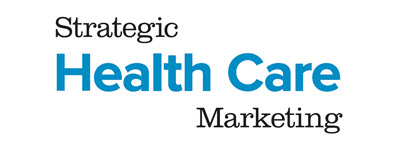Featured Article from Strategic Health Care Marketing
by Candace A. Quinn
Marketers have spent the past 10 to 15 years focusing on emerging brand development initiatives for their organizations. Marketers want the brand equity of a Cleveland Clinic, Mayo Clinic, or Johns Hopkins Medicine, yet most of them represent the typical community-based hospital or health system that is slugging it out with the other hospitals or health systems in the area.
I had the opportunity to speak with seven C-suite occupants who had either recently undergone efforts to redevelop their brands or were in the midst of doing so. From my own experience as a brand consultant, I knew that C-suite members typically have wide-ranging views on the value of brand development. The editor of Strategic Health Care Marketing and I thought it would be interesting to see if I could capture those thoughts.
The interviewees had the caveat that they could remain anonymous, recognizing that their brand strategies (and philosophies about the same) are among some of their most strategic assets. When relevant, I have provided a brief description of the organization, its marketplace, or other pertinent parameters within which to couch the subject’s comments.
Q. Your organization is in a very competitive market. How would you describe your brand position today? What prompted you to undertake brand development work? Has your brand changed since you began that work? In what ways?
A. Specialty hospital in a major metropolitan market with big-brand competition. Before our brand work, we were really misunderstood. The brand was sleepy and essentially unrecognized. Today—three years later—we are better understood by both consumers and providers. And it is leading to a better contracting position for us.
A. Large academic medical center. Our brand journey began over 15 years ago. It started with a focus on brand architecture and resulted in the creation of very new brand experiences. Today, we are a single brand across multiple entities and are applying our brand experience work across multiple centers of excellence.
A. Large Midwest system. We also started with a brand architecture project and recognized that our current brand had no solidarity of meaning and no real differentiation from any other organization. In fact, our system meant nothing; we were simply a collection of area hospitals.
A. Large community hospital in a two-hospital town. As competition heated up, and advertising wars were a way of life, we realized that differentiation was going to be even more critical. We knew what set us apart, but we suspected that our communities did not. A hospital is a hospital to the average consumer. We embrace some very special values as an organization, and we need to find a way to position this difference to resonate with our communities.
Q. Did your organization go beyond naming, logos, and external elements of the brand identity in your project? What role did the brand experience play in your brand development work?
A. While we did logo, look and feel, and external messaging, we also knew we had to go beyond great patient satisfaction scores. We had to set service standards based upon a process to identify a host of consumer expectations—we needed to match promises to practices and vice versa.
A. We found the voice of the patient to be a compelling and motivating agent of real change. In every instance where we have engaged patients in the experience design, we have found sustainable results.
A. We are always developing the experience. Our brand is built on the experiences of the people we serve. We tell our brand stories through the eyes of the patients and their caregivers. We have extraordinary stories to tell. We serve an enormously large population from across the country, and people come back to us because of the brand experience.
A. Our brand is based on a brand experience that no one else can offer in our market, so we empower every team in our organization to put that difference to work in its area. We are continuously overlaying the principles of “how” we do our work to show how we are different.
A. We had the great fortune to be able to build a new facility and took that opportunity to go beyond building a physical building. We wanted to build an experience. So we engaged Starizon, an experience design firm, to assist us in a formal design process that forced us to rethink every encounter, every touch point, and every aspect of the patient experience to determine if and how we could differentiate ourselves from the competition.
Q. Would you describe your brand position today as meaningfully differentiated from your competition? In what way?
A. We learned that spending more money did not equal better advertising. Telling better stories—tying back to our brand through warm and fuzzy stories—is touching, but our brand is also about serious medicine. Finding that balance and staying on brand have allowed us to put great distance between our brand and our competition. Fortunately for us, competitors are still trying to figure out what their brands stand for.
A. We’re getting feedback already from our community that our brand is really resonating. Our marketing initiatives have adapted to the new look and feel at the core of our brand, and we are seeing results. We recognized that all the advertising in the world won’t make a difference if our patients don’t have a meaningful brand experience. Case in point: Since we’ve focused on improving our brand experience in our ED, we went from below the 20th percentile in overall satisfaction to the 89th percentile—in just three reporting periods.
A. While we continue to differentiate ourselves around our triple aim of improving the health of the populations we serve, keeping health care affordable in our community, and improving the individual’s experience, it is really the latter that will truly differentiate us. Quality standards are so high today that patients are assured of reasonably sound levels of quality, and in a competitive market, cost or price is driven by the contracting parties. So in the end, it will boil down to the experience.
A. Meaningful differentiation—we are on the road to it. We want to be a national brand one day. To do that, we have to become a stronger regional brand. As we compete with full-service providers and other specialty hospitals in our specialty, we will need not only the best talent, the easiest access, the lowest pricing, we will need to deliver the best, most unexpected experience to capture a national audience.
Q. How are you measuring the value of your brand today?
A. We use HCAHPS scores, recommendation scores, consumer studies, and we trend market share across all service lines. We are intrigued by the concept of a Net Promoter Score, developed by Fred Reichheld, a business strategist at Bain & Company. In essence, it is derived by subtracting the percent of detractors from the percent of promoters. Determining whether one is a detractor or promoter depends on how one answers “the likelihood of recommending your hospital” question. An ideal score would be 100 percent. We have a way to go, but have seen improvement throughout the journey.
A. We are three years into our brand journey. We’ve seen 10 percent growth in volumes, two-point growth in market share in just the past year—but there is more to it than the numbers. I see value in the new confidence our physicians have in our future. They are prepared to invest themselves when they have other options for their practice. We have numerous business opportunities coming our way; it seems everyone wants to be our partner today. We are recruiting the best doctors in our specialty across the country, taking them away from some very prestigious organizations. I’m not sure how you “measure” that, but it’s very real.
Q. Looking ahead to health care reform, ACOs, and all of the market consolidation, what will be the impact of having a strong, well-defined brand? Do you anticipate any brand strategy changes?
A. We are already seeing the benefits. National employers are looking for national centers of excellence for specific services. Regionally, we are already at the top of the list for our specialty and are moving up in national rankings by every measure. We have to have a strong brand, meaningfully differentiated among our competition, because national contractors are seeking that out. We want to be on everyone’s short list for our specialty.
A. We have come to realize that it will all come back to relationships. Do we have the relationships with the providers that we need across the continuum, and what will be the basis for the relationship? We believe it will be shared values, shared philosophies, and at the core of that will be our brand experience. We can control how we treat one another, how we treat our partners, and how we treat our patients and their families. We are already a strong partner across our region and have had an overwhelming response to our brand experience, as evidenced by the number of new partners coming our way. I don’t see any major brand strategy changes on the horizon, but the dilution of the brand across new partnerships is a concern to me. We can’t leave that to chance and are working hard to put brand standards in place that transcend look and feel. Our brand standards will be about the experience.
A. I firmly believe that strong brands can demand more from ACO relationships. Regardless of the insurer, strong brands will be included in contracts because without the strong brand, the insurer can’t sell plans. I also caution my CEO colleagues to gain a better understanding of the cost/value equation. So often I hear about or see my colleagues slashing the marketing budgets in their organizations to reduce costs. In reality, their focus should be on growth—gaining share and improving overall financial performance with the kind of business that generates revenues, to support the business that doesn’t.
A. As a result of the Affordable Care Act, we anticipate the industry consolidating significantly. The advantage—if all else is equal, including financial and market share, and you have a strong brand and are living that brand—is that you will attract a strong, loyal patient base and that will attract strong partners. Aligning those strong brands across common shared value systems will result in strong affiliations. For so many of us, it’s not if – it’s when. We want to be in the driver’s seat when that day comes.
A. We’ve been watching and experiencing that consolidation already in our market. We have been in the control position for nearly two decades. But as a top brand, we can’t rest on those laurels. We continue to focus on our vision, but at the same time, we focus on how we treat our partners—our physicians, our employees, our payers, our customers. We stay on top of their needs, we develop new services only when partners that share our values can’t be found, and we continuously reach out to our customers and stakeholders as a strategy for continued growth and guidance. In return, these customers and stakeholders are our advocates and our catalysts for continued improvement. We believe that brands do evolve, and with growth comes a renewed focus on maintaining the core values of the brand. However, as consolidation continues to occur, we believe if we keep our customers and stakeholders at the center of our decision making, we will deliver on our brand promise every time.
Candace A. Quinn is CEO and senior consultant for
Brand=Experience in Loves Park, IL. You can reach Quinn at candace [at] brandequalsexperience [dot] com.









